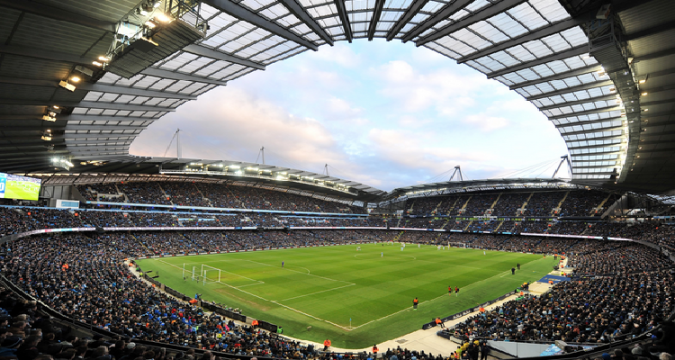
Maintaining a world-class football stadium requires a coordinated approach to ensure that every aspect—from the pitch to the seating, and even the facilities—remains in peak condition. Not only does this maintain the stadium’s aesthetic appeal, but it also preserves safety, enhances fan experience, and extends the life of the facility. Here are some top strategies for maintaining a world-class football stadium.
1. Regular Pitch Maintenance and Turf Management
The pitch is the heart of a football stadium, and keeping it in optimal condition is essential. Regular maintenance involves mowing, fertilization, aeration, and overseeding to ensure the grass remains healthy and can withstand the demands of matches. A world-class stadium typically has a dedicated team of groundskeepers who monitor the health of the turf daily, looking for signs of disease, pests, or wear.
To maintain the pitch, specialized machinery and equipment are often used to aerate the soil and improve drainage. For instance, using vertical aerators helps oxygenate the soil, allowing grass roots to grow deeper and more resilient. In cases of synthetic turf, routine cleaning and brushing are essential to keep the playing surface consistent and safe. Additionally, many stadiums implement advanced irrigation systems that use moisture sensors to monitor and adjust water levels, conserving resources while keeping the turf in top condition.
2. Implementing an Effective Cleaning Program
A clean stadium not only provides a pleasant environment for fans but also reduces the risk of pest infestations and improves safety. Stadiums should have a comprehensive cleaning program that includes regular waste collection, restroom cleaning, and seating area sanitation. High-traffic areas such as concession stands, locker rooms, and entrances require frequent attention to ensure cleanliness.
Stadiums should also focus on sustainable waste management practices. For example, offering recycling stations and educating fans on proper disposal can reduce waste and promote eco-friendly practices. After each match or event, a deep cleaning should be carried out, involving power washing of floors, sanitizing surfaces, and thoroughly cleaning all public areas. Additionally, for restrooms and food service areas, frequent inspections should be conducted to ensure health and safety compliance.
3. Ensuring Effective Seating Maintenance
Over time, stadium seating endures a lot of wear and tear, especially in popular or high-traffic sections. To prevent damage or degradation, stadiums should conduct regular inspections and maintenance on seating. This includes checking for loose bolts, broken or cracked seats, and wear to upholstery in premium seating areas.
When damage is found, immediate repair or replacement is crucial to avoid compromising fan safety. Some stadiums go a step further by having seats routinely cleaned and treated with protective coatings to reduce fading and make them easier to clean. For older seats, refurbishing with new upholstery or finishes can extend their lifespan and improve comfort.
4. Upkeep of Lighting and Electrical Systems
Lighting plays a crucial role in creating a vibrant match atmosphere and ensuring player safety. To keep the stadium well-lit, particularly for night games, maintenance of lighting systems is essential. This includes checking and replacing bulbs, inspecting wiring, and ensuring backup power sources are functional.
Today, many stadiums are switching to LED lighting, which is not only energy-efficient but also provides better illumination. Routine inspections of these systems prevent lighting malfunctions during events. In addition to field lighting, all public and emergency lighting should be regularly checked to ensure compliance with safety regulations.
5. Regular Inspection and Maintenance of Structural Components
Structural integrity is a cornerstone of stadium safety. Stadium management teams should conduct routine inspections of structural components, including concrete beams, railings, floors, and walls, to detect and address any signs of wear, corrosion, or structural fatigue.
These inspections should be carried out by certified professionals who can assess the need for repairs or reinforcements. A proactive approach to structural maintenance, such as sealing cracks or reinforcing weakened areas, can prevent costly repairs and ensure the stadium remains safe for both fans and players.
6. Modernizing with Technology and Sustainability Initiatives
Incorporating modern technology can streamline maintenance tasks and enhance sustainability. For instance, installing smart sensors in the stadium can help monitor energy consumption, water usage, and HVAC system performance. These sensors provide real-time data, allowing for adjustments that reduce resource waste.
Many world-class stadiums are implementing green technologies, like solar panels, to reduce their carbon footprint. Additionally, using rainwater harvesting systems for pitch irrigation can help save water. As sustainability becomes a core value for sports venues, adopting environmentally friendly practices is essential to staying competitive and responsible.
7. Dedicated Staff Training and Emergency Preparedness
Having a well-trained maintenance team is vital for stadium upkeep. Providing regular training on new techniques, equipment, and safety protocols keeps staff informed and efficient. Additionally, training on emergency preparedness ensures that staff can respond swiftly to unexpected events, such as power outages or inclement weather.
Stadiums that prioritize training see fewer operational disruptions, as their teams can handle maintenance issues proactively and effectively. Regular safety drills and workshops ensure that every team member understands their role in maintaining both the stadium’s condition and safety standards.
Maintaining a world-class football stadium requires a commitment to excellence across various maintenance areas. From pitch upkeep to advanced lighting systems and structural inspections, each aspect plays a critical role in creating an enjoyable and safe experience for players and fans alike. By following these strategies, stadium managers can ensure their facilities remain in top form season after season, delivering unforgettable experiences to everyone who steps inside.